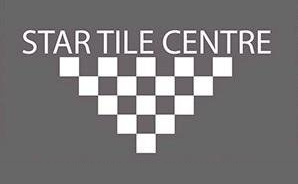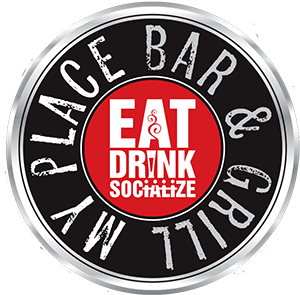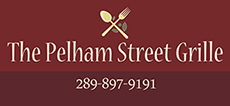Safety equipment can save your life.
At Miller Restoration, our business is cleaning up after home tragedies – fires, floods, weather-related damage, and other incidents. We know, absolutely, that some safety equipment in your home can both prevent tragedies, and mitigate damage. Some can be credited with saving lives.
No matter where you live – condo, townhouse, detached home or small apartment – there are pieces of safety equipment you shouldn’t be living without. Some are mandated by law, but some just make common sense. Our team of Disaster Kleenup International-certified professionals wants to pass along its tips for which safety equipment pieces you need for maximum protection.
Smoke detector/Fire alarm
Ontario Fire Code states that every home must have a working fire/smoke alarm on every storey, and outside sleeping areas. Failure to comply could result in a ticket for $360 or a fine of up to $50,000 for individuals, or $100,000 for corporations. A piercing alarm in the middle of the night can save lives if smoke or fire is present in the home. It’s a good idea to check the batteries of each alarm periodically, to ensure they are still in working order.
Carbon monoxide detector
Ontario Fire Code and Ontario Building Code regulations state that CO alarms are mandatory in new residential buildings with fuel-burning appliances (like a gas furnace, stove or fireplace) and an attached storage garage for vehicles – including gas-fuelled lawnmowers, snowplows and other tools. Many municipal bylaws require the presence of a CO alarm adjacent to each sleeping area of a home. A CO alarm may be placed at any height, since CO mixes with the air in a room. Our team suggests placing one on each storey of the home, near fuel-burning appliances, and outside sleeping areas. Test batteries at the same time as you test your smoke detectors. Ticketable offences may result in fines of $235 or $360, depending on the violation. Fines may be higher in cases of conviction under Part III of the Provincial Offences Act.
Fire extinguishers
Fire extinguishers should be present in at least a few places in the home: The kitchen; near a wood-burning stove or fireplace, and in the garage. There are different types of extinguishers for different types of applications: Some are filled with water and foam; some are filled with carbon dioxide or dry or wet chemicals. There are five classes of fire that can affect a residential home – view the different types on the Fire Equipment Manufacturers’ Association website, HERE. Every family member, including children, should learn how to handle the fire extinguisher: Many municipal fire departments hold open houses annually, and will be happy to show your family how to properly use a fire extinguisher.
Personal safety gear
For homeowners who like to dabble in home repair for small jobs and outdoor work, it’s a good idea to own the following pieces of personal safety gear: Work boots; safety glasses; masks or respirator equipment; work gloves; ear protectors; back support belt; knee pads; hard hat; thick work pants and long-sleeved work shirt, and a home first-aid kit containing bandages, safety pins, gauze and antiseptic spray or lotion. Most department, pharmacy or hardware stores sell ready-made first-aid kits, in travel, car and home sizes.
A ladder with safety features
If you own a home with more than one storey and it’s not a condo, you need a ladder. A ladder with safety features, like wide steps and hand rails, may make a homeowner feel a little bit safer when it’s necessary to climb up high. Remember, the top ledge of a ladder is not a step; use the appropriate size of ladder for the job you have to do.
Emergency egress equipment
Plug-in, rechargeable safety lights; drop-down ladders that hook onto windowsills; fire hoods or masks; window-breaking tools (good for keeping in cars, too) and other equipment may help families arrive safely on the ground in case of a nighttime fire or situation requiring emergency egress from an upper storey.
A home maintenance binder
At Miller, we are in favour of maintaining a binder that outlines a section for each room of the home. In each section, we like to keep receipts for equipment; equipment manuals; notes about repairs and other information for that room. We also like to put in a section for the whole home, with a copy of our insurance policy; correspondence; a copy of our home’s deed and a contact list showing names and numbers for service companies; family members; our insurance broker and company and our lawyer. We suggest keeping the binder accessible, in an area where you have a desk, where you sit to pay bills or go to relax.
A home safe
Homeowners who install a fire-proof safe say they feel more at ease about their home ownership documents and paperwork they want to protect. If you don’t have a safe, but want to keep some paperwork protected, one suggestion is to pack it into plastic zipper-sealed bags and place it into a metal cookie tin, in the refrigerator or freezer. A refrigerator/freezer can become damaged in a fire, but if the papers are packed into a metal tin, they have a good chance of surviving.
That covers the basics; our team of professionals at Miller knows keeping on top of safety is something we don’t all think about every day. We also know that as homeowners, it’s something we just have to do.
Having the right safety equipment on hand can mean we sleep a little more soundly, secure in the knowledge that our families and our homes are protected, to the best of our abilities. Are you in need of cleanup or advice following a disaster in your home? Our experts at Miller Restoration would be happy to answer any questions you might have. Call the Miller office at 905-688-9224 or give us a shout here.




















